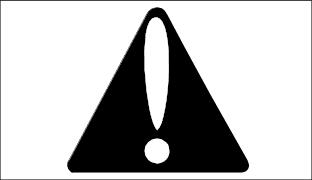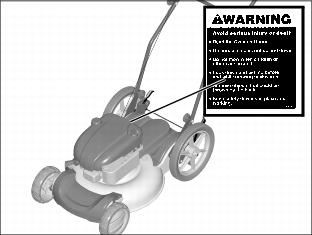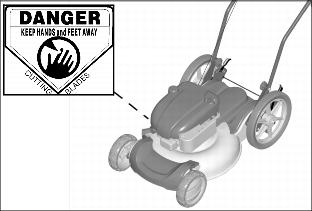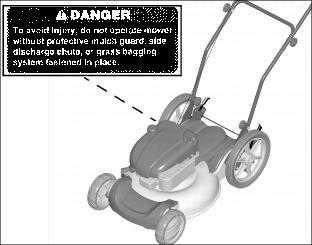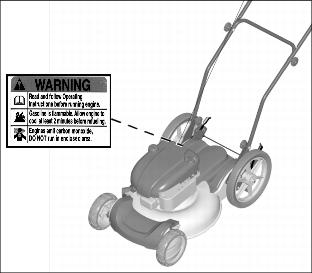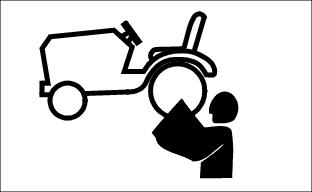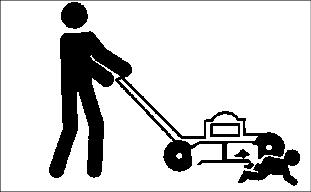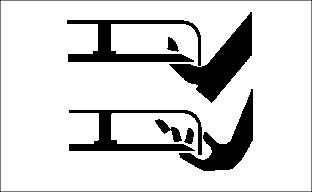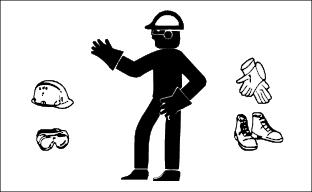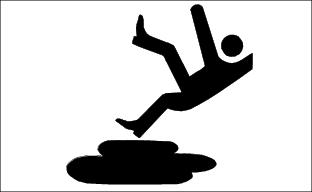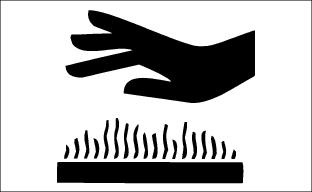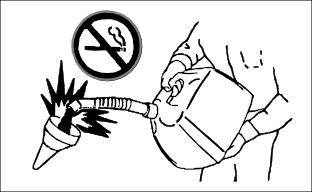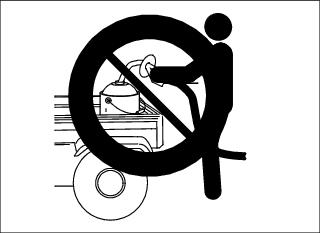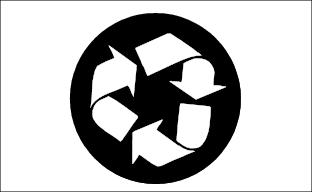
Safety
Understanding The Machine Safety Labels
The machine safety labels shown in this section are placed in important areas on your machine to draw attention to potential safety hazards.
On your machine safety labels, the words DANGER, WARNING, and CAUTION are used with this safety-alert symbol. DANGER identifies the most serious hazards.
The operator's manual also explains any potential safety hazards whenever necessary in special safety messages that are identified with the word, CAUTION, and the safety-alert symbol.
WARNING
· Avoid serious injury or death.
· Go across slopes, not up and down.
· Do not mow when children or others are around.
· Look down and behind before and while mowing backwards.
· Remove objects that could be thrown by the blade.
· Keep safety devices in place and working.
DANGER
DANGER
· To avoid injury, do not operate mower without protective mulch guard, side discharge chute, or grass bagging system fastened in place.
WARNING
· Read and follow operating instructions before running engine.
· Gasoline is flammable. Allow engine to cool at least 2 minutes before refueling.
· Engines emit carbon monoxide, do not run in enclosed area.
Emission Control System Certification Label
NOTE: Tampering with emission controls and components by unauthorized personnel may result in severe fines or penalties. Emission controls and components can only be adjusted by EPA and/or CARB authorized service centers. Contact your John Deere Commercial and Consumer Equipment Retailer concerning emission controls and component questions.
The presence of an emissions label signifies that the engine has been certified with the United States Environmental Protection Agency (EPA) and/or California Air Resources Board (CARB).
The emissions warranty applies only to those engines marketed by John Deere that have been certified by the EPA and/or CARB; and used in the United States and Canada in off-road mobile equipment.
Emission Compliance Period
If your engine has the emission compliance category listed on the emission control system certification or air index label, this indicates the number of operating hours for which the engine has been certified to meet EPA and/or CARB emission requirements. The following table provides the engine compliance period in hours associated with the category found on the certification label.
Certification
Your mower has been certified by an independent laboratory for compliance with American National Standard B-71.1, "Safety Specifications" for Power Lawn Mowers, Lawn and Garden Tractors, and Lawn Tractors.
Operating Safely
· Read, understand and follow all instructions in the manual, on the machine and on the safety video before starting.
· Only allow responsible adults, who are familiar with the instructions to operate the machine. Local restrictions may restrict the age of the operator.
· Be thoroughly familiar with the controls and the proper use of the machine before starting.
· Inspect machine before you operate. Be sure hardware is tight. Repair or replace damaged, badly worn, or missing parts. Be sure guards and shields are in good condition and fastened in place. Make any necessary adjustments before you operate.
· Be sure all drives are in neutral and parking brake is locked before starting engine. Only start engine from the operator's position.
· Do not change the engine governor settings or overspeed the engine. Operating the engine at excessive speed can increase the hazard of personal injury.
· Do not operate mower without discharge chute or entire grass catcher in place. Never operate with the discharge deflector raised, removed, or altered, unless using a grass catcher.
· Check brake action before you operate. Adjust or service brakes as necessary.
· Stop machine if anyone enters the area.
· If you hit an object or if abnormal vibration occurs, stop the machine and inspect it. Make repairs before you operate. Keep machine and attachments properly maintained and in good working order.
· Be aware of the mower discharge direction and make sure that no one is in the path of the discharge direction.
· Do not leave machine unattended when it is running.
· Only operate during daylight or with good artificial light.
· Slow down and be careful of traffic when operating near or crossing roadways. Stop blades before crossing roads or sidewalks. Use care when approaching blind corners, shrubs, trees, or other objects that may obscure vision.
· Do not operate machine if you are under the influence of drugs or alcohol.
· Use only accessories and attachments approved by the manufacturer of the machine. Keep safety labels visible when installing accessories and attachments.
· Older adults are involved in a large percentage of riding mower accidents involving injury. These operators should evaluate their ability to operate a mower safely enough to protect the operator and others from serious injury.
· Do not wear radio or music headphones. Safe service and operation requires your full attention.
Rotating Blades are Dangerous - Protect Children and Prevent Accidents
Protect Children:
· Never assume that children will remain where you last saw them. Children are attracted to mowing activity, stay alert to the presence of children.
· Keep children in the house when you are operating the machine.
· Turn machine off if a child enters the area.
· Use extra care when you come to blind corners, shrubs, trees, or other objects that may block your vision.
· Do not let children or an untrained person operate the machine.
Help Prevent Serious or Fatal Accidents:
· Be alert at all times, people especially children can move quickly into the area before you know it.
· Stop the blade when crossing gravel drives, walks, or roads.
· Shut off blades when you are not mowing.
· Keep hands, feet, and clothing away from rotating blades.
Avoid Injury from Contacting Blade
Before you unplug or adjust machine:
· Keep hands, feet and clothing away from blade when engine is running.
Wear Appropriate Clothing
· Always wear safety goggles or safety glasses with side shields when operating the machine.
· Wear close fitting clothing and safety equipment appropriate for the job.
· While mowing, always wear substantial footwear and long trousers. Do not operate the equipment when barefoot or wearing open sandals.
· Wear a suitable protective device such as earplugs. Loud noise can cause impairment or loss of hearing.
Practice Safe Maintenance
· Only qualified, trained adults should service this machine.
· Understand service procedure before doing work. Keep area clean and dry.
· Do not operate the engine in a confined space where dangerous carbon monoxide fumes can collect.
· Never lubricate, service, or adjust machine while it is moving. Keep safety devices in place and in working condition. Keep hardware tight.
· Keep hands, feet, clothing, jewelry, and long hair away from any moving parts, to prevent them from getting caught.
· Lower attachments to the ground before servicing machine. Disengage all power and stop the engine. Lock park brake and remove the key. Let machine cool.
· Disconnect battery or remove spark plug wire (for gasoline engines) before making any repairs.
· Before servicing machine, carefully release pressure from any components with stored energy, such as hydraulic components.
· Keep all nuts and bolts tightened, especially blade attachment bolts.
· Securely support any machine elements that must be raised for service work. Use jack stands or lock service latches to support components when needed.
· Never run engine unless park brake is locked.
· Use care when checking blades. Wrap blades or wear gloves and use caution when servicing them. Only replace blades. Never straighten or weld them.
· Keep all parts in good condition and properly installed. Fix damage immediately. Replace worn or broken parts. Replace all worn or damaged safety and instruction decals.
· Grass catcher components are subject to wear, damage, and deterioration which could expose moving parts or allow objects to be thrown. Check components frequently and replace with manufacturer's recommended parts when necessary.
· To prevent fires, remove any buildup of grease, oil, or debris from the machine, especially the engine compartment.
· Charge batteries in an open, well-ventilated area, away from sparks. Unplug battery charger before connecting or disconnecting from the battery. Wear protective clothing and use insulated tools.
· Do not modify machine or safety devices. Unauthorized modifications may impair its function and safety.
Prevent Fires
· Remove grass and debris from engine compartment and muffler area, before and after operating machine, especially after mowing or mulching in dry conditions.
· To reduce fire hazard, keep engine and engine compartment free of grass, leaves, or excessive grease.
· Allow engine to cool before storing in any enclosure.
· Never remove fuel cap, or add fuel with engine running or hot. Allow engine to cool for several minutes.
· Never store equipment with fuel in the tank inside a building where fumes may reach an open flame or spark.
Handling Fuel Safely
Fuel and fuel vapors are highly flammable:
· Do not refuel machine while you smoke, when machine is near an open flame or sparks, or when engine is running. Stop engine and allow to cool before filling.
· Never remove the fuel cap or add fuel with the engine running.
· Never fill fuel tank or drain fuel from a machine in an enclosed area. Fill fuel tank outdoors.
· Prevent fires. Clean up spilled fuel immediately. If fuel is spilled on clothing, change clothing immediately.
· Do not store fuel in container or machine with fuel in tank in a building where fumes may reach an open flame or spark.
· Prevent fire and explosion caused by static electric discharge. Use only non-metal, portable fuel containers approved by the Underwriter's Laboratory (U.L.) or the American Society for Testing & Materials (ASTM). If using a funnel, make sure it is plastic and has no screen or filter.
· Static electric discharge can ignite gasoline vapors in an ungrounded fuel container. Remove the fuel container from the bed of a machine or trailer or the trunk of a car and place on the ground away from the machine before filling. Keep nozzle in contact with container opening while filling. Do not use a nozzle lock-open device.
· When practical, remove equipment from trailers or truck beds and refuel them on the ground. If this is not possible, use a portable, plastic fuel container to refuel equipment on a truck bed or trailer.
· For gasoline engines, do not use gas with methanol. Methanol is harmful to your health and to the environment.
Handling Waste Product and Chemicals
Waste products, such as, used oil, fuel, coolant, brake fluid, and batteries, can harm the environment and people:
· Do not use beverage containers for waste fluids - someone may drink from them.
· See your local Recycling Center or John Deere dealer to learn how to recycle or get rid of waste products.
· A Material Safety Data Sheet (MSDS) provides specific details on chemical products: physical and health hazards, safety procedures, and emergency response techniques. The seller of the chemical products used with your machine is responsible for providing the MSDS for that product.
